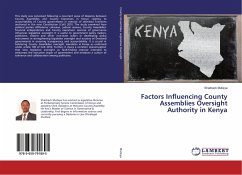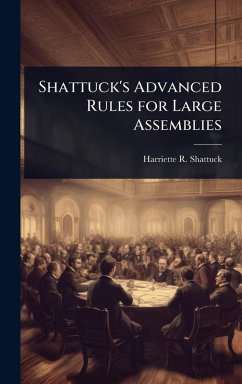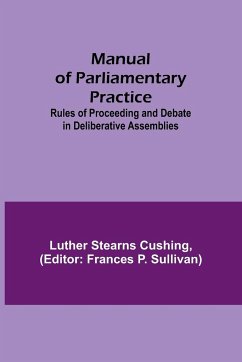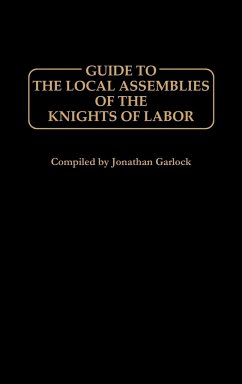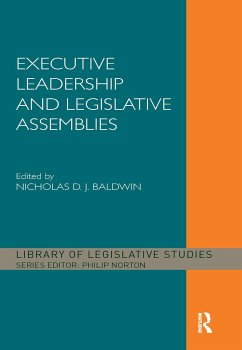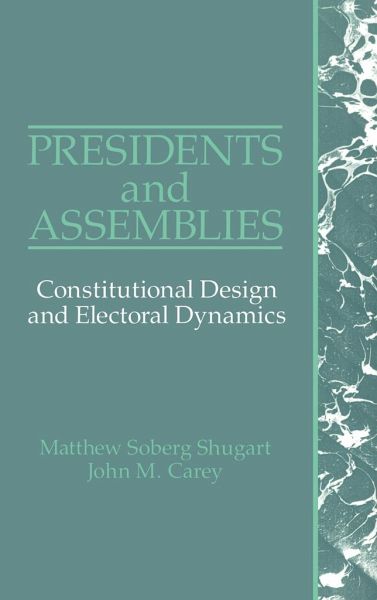
Presidents and Assemblies
Constitutional Design and Electoral Dynamics

PAYBACK Punkte
54 °P sammeln!
In recent years renewed attention has been directed to the importance of the role of institutional design in democratic politics. Particular interest has concerned constitutional design and the relative merits of parliamentary versus presidential systems. In this book, the authors systematically assess the strengths and weaknesses of various forms of presidential systems, drawing on recent developments in the theoretical literature about institutional design and electoral rules. They develop a typology of democratic regimes structured around the separation of powers principle, including two hy...
In recent years renewed attention has been directed to the importance of the role of institutional design in democratic politics. Particular interest has concerned constitutional design and the relative merits of parliamentary versus presidential systems. In this book, the authors systematically assess the strengths and weaknesses of various forms of presidential systems, drawing on recent developments in the theoretical literature about institutional design and electoral rules. They develop a typology of democratic regimes structured around the separation of powers principle, including two hybrid forms, the premier-presidential and president-parliamentary systems, and they evaluate a number of alternative ways of balancing powers between the branches within these basic frameworks. They also demonstrate that electoral rules are critically important in determining how political authority is exercised.
Table of contents:
Part I. Presidential and Parliamentary Democracy: 1. Basic choices in democratic regime types; 2. What is presidentialism? Criticisms and responses; 3. The constitutional origin and survival of assembly and executive; 4. Legislative powers of presidents: veto and decree; Part II. Electoral Dynamics of Presidential Democracy: 5. Electoral dynamics: efficiency and inefficiency; 6. Electoral rules and the party system; 7. Electoral cycles and the party system; Part III. Institutiona: Engineering: 8. Semi-presidentialism: the third alternative; 9. Electoral cycles in semi-presidential regimes; 10. Divided polities and collegial presidencies; 11. Conclusions; Appendices.
A systematic assessment of the strengths and weaknesses of various forms of presidential systems, it draws on recent developments in the theoretical literature about institutional design and electoral rules.
A systematic assessment of the strengths and weaknesses of various forms of presidential systems.
Table of contents:
Part I. Presidential and Parliamentary Democracy: 1. Basic choices in democratic regime types; 2. What is presidentialism? Criticisms and responses; 3. The constitutional origin and survival of assembly and executive; 4. Legislative powers of presidents: veto and decree; Part II. Electoral Dynamics of Presidential Democracy: 5. Electoral dynamics: efficiency and inefficiency; 6. Electoral rules and the party system; 7. Electoral cycles and the party system; Part III. Institutiona: Engineering: 8. Semi-presidentialism: the third alternative; 9. Electoral cycles in semi-presidential regimes; 10. Divided polities and collegial presidencies; 11. Conclusions; Appendices.
A systematic assessment of the strengths and weaknesses of various forms of presidential systems, it draws on recent developments in the theoretical literature about institutional design and electoral rules.
A systematic assessment of the strengths and weaknesses of various forms of presidential systems.




